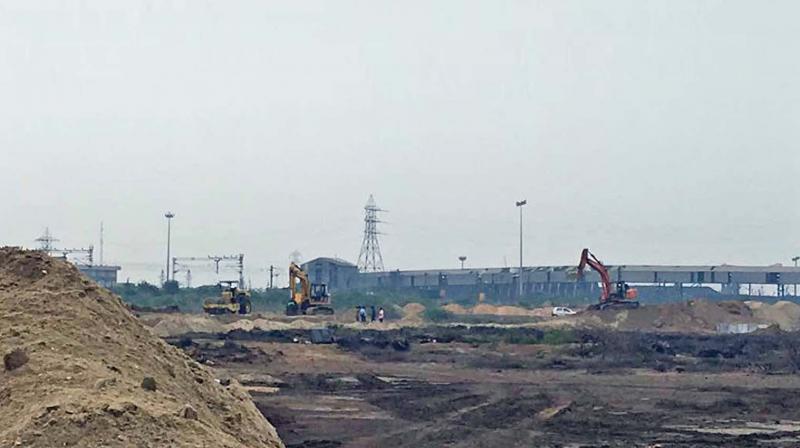Destruction continues at Ennore Creek
Mangroves hold a good capacity to withstand salinity and play a major role in preventing floods.

Chennai: Piles of dredging material occupy the dry Kosasthalaiyar river in Ennore, even after the southern bench of the National Green Tribunal ordered the Kamarajar port authorities to clear the river.
Kamarajar port’s obedience of the court order is partial, as the authorities who have constructed a big bund to remove the sand is dumping the same in other parts of the river, defying environmental norms.
Even though the port authorities told Deccan Chronicle that they are the ‘saviours of nature’ and would not damage the water bodies, the environmentalists and the fishermen community cry foul over the ongoing destruction.
A senior official from the Kamarajar Port told DC: “Following the order from the NGT, we removed the dumped soil and put it outside the river. We are a government institution and we care about nature.”
Pooja Kumar, an environmentalist working with the Coastal Resource Centre said that the current dumping site belongs to the Ennore creek. “According to the Coastal Zone Management Plan, the area falls in a wetland belonging to Ennore creek. Kamarajar Port authorities should come up with a dredge material disposal plan wherein an offshore area should be identified. What if the area, which is now becoming a dumpsite, plays a larger ecological purpose?”
The fishermen community is enraged over the port's move as the creek and the river have been their sources of livelihood. K.Mageshwaran, an advocate representing the Meenavar Nala Sangam (MNS), produced photographs of the dumpsite before the tribunal recently, after which the bench formed an advocate's commission to ascertain the status of the river.
Speaking to Deccan Chronicle, Mageshwaran said: “Sand is dumped into the Kosasthalaiyar river by Kamarajar Port during the process of its container terminal project. We are waiting to begin the process of ascertaining the condition of the river”.
The creek, which is haven to mangrove population, is under threat due to the dumping of the material. Explaining the ecological significance of the wetland, Pooja Kumar said: “Any activity that changes the natural state of the river will affect the mangrove population. Decline of mangroves would directly affect the breeding of fishes and prawns, putting the fishermen's livelihood at stake.”
“The areas where mangroves used to grow are now becoming dry land and they are self-destructive to the mangroves,” she added.

